

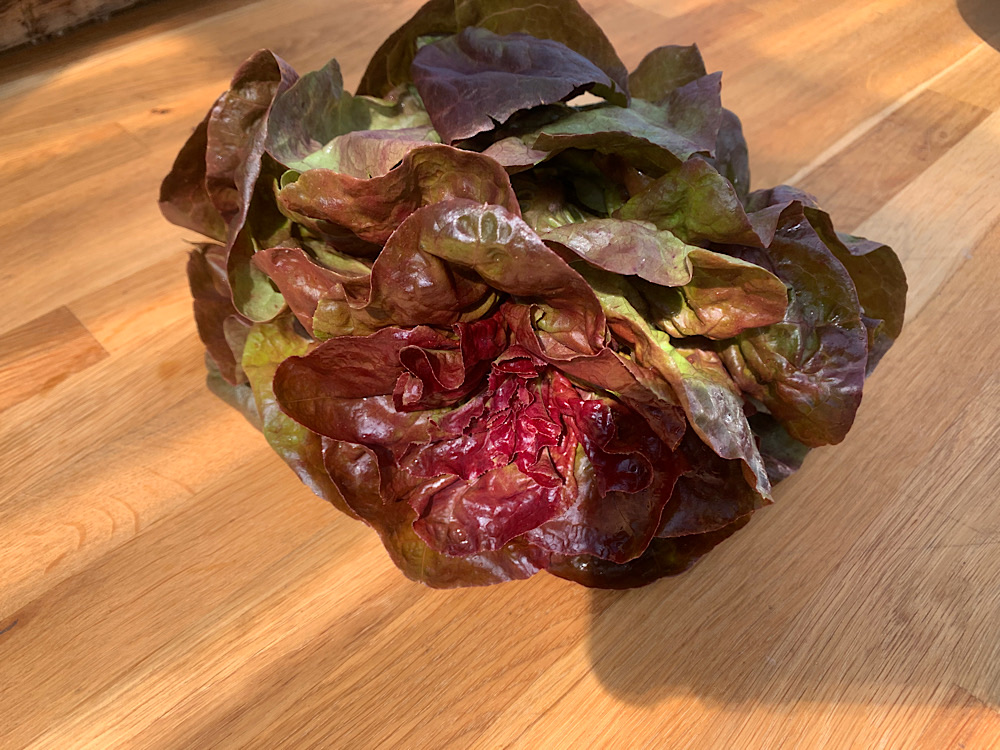
Lettuce is best known for salad, but you can cook it too. Adding greens at the end of a cooking dish so they just soften.
Rinse. Eat raw or cooked.
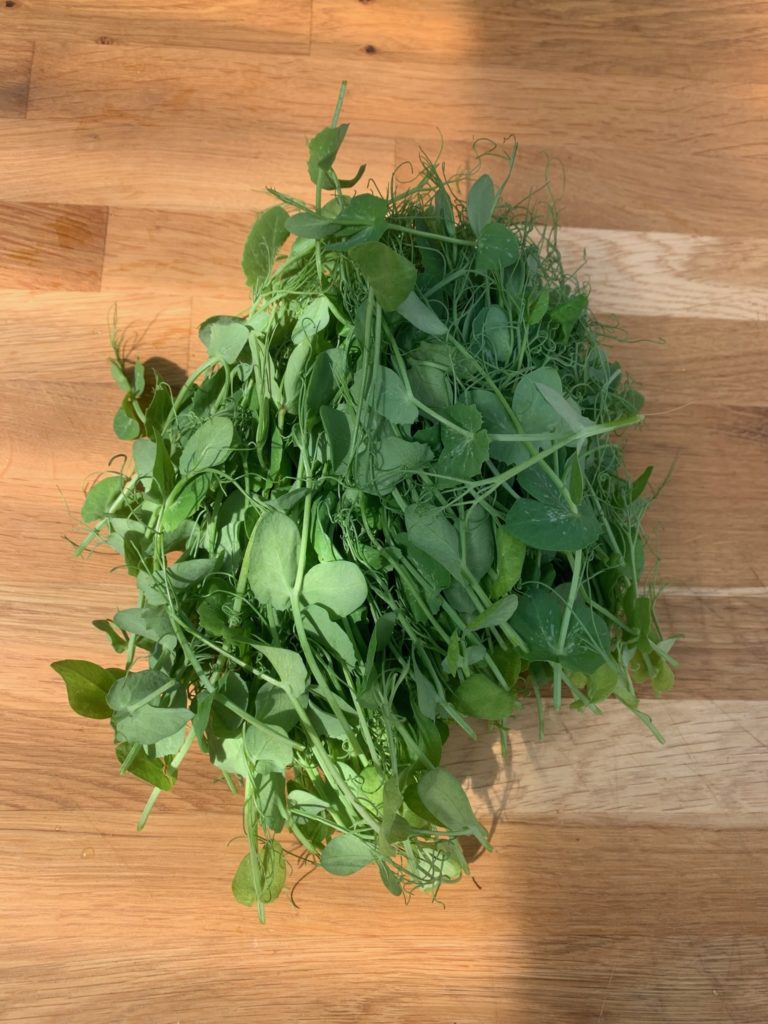
Pea tendrils, also known as pea shoots or pea sprouts, are young and tender tendrils that grow from the tops of pea plants. They are delicate, leafy greens with thin, curly stems and small, bright green leaves. The taste of pea tendrils is often described as mild and slightly sweet, with a subtle hint of the distinct flavor found in mature peas. The texture is tender and crisp, providing a pleasant crunch.
Rinse. The whole tendril is edible. Sometimes the stems get a little woody at the ends and can be removed. Eat raw or cooked.
It's best to use it within a few days for optimal flavor. To store it, place unwashed leaves in a perforated plastic bag or a container lined with a dry paper towel to absorb excess moisture. Seal the bag or container loosely to allow for some airflow. Store the bag in the refrigerator's crisper drawer, where it will stay fresh for a few days.
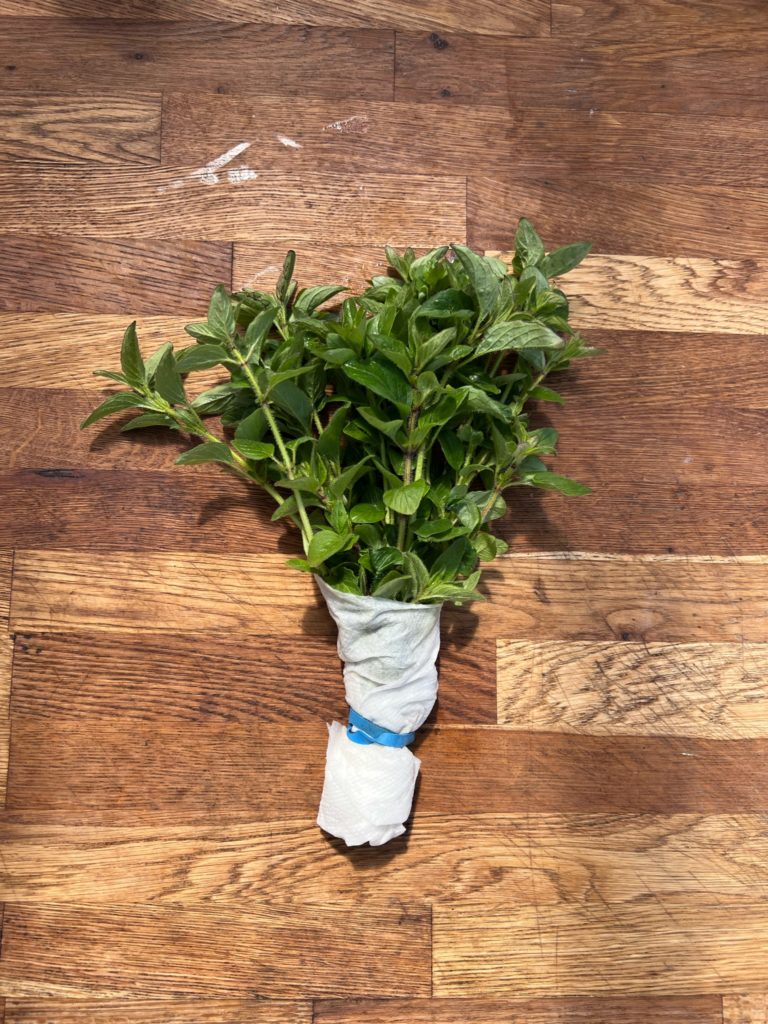
A herb in the mint family. Used in Greek food. Pungent, bitter, grassy with a little mint flavor.
Rinse. Chop finely. Eat raw or cooked.
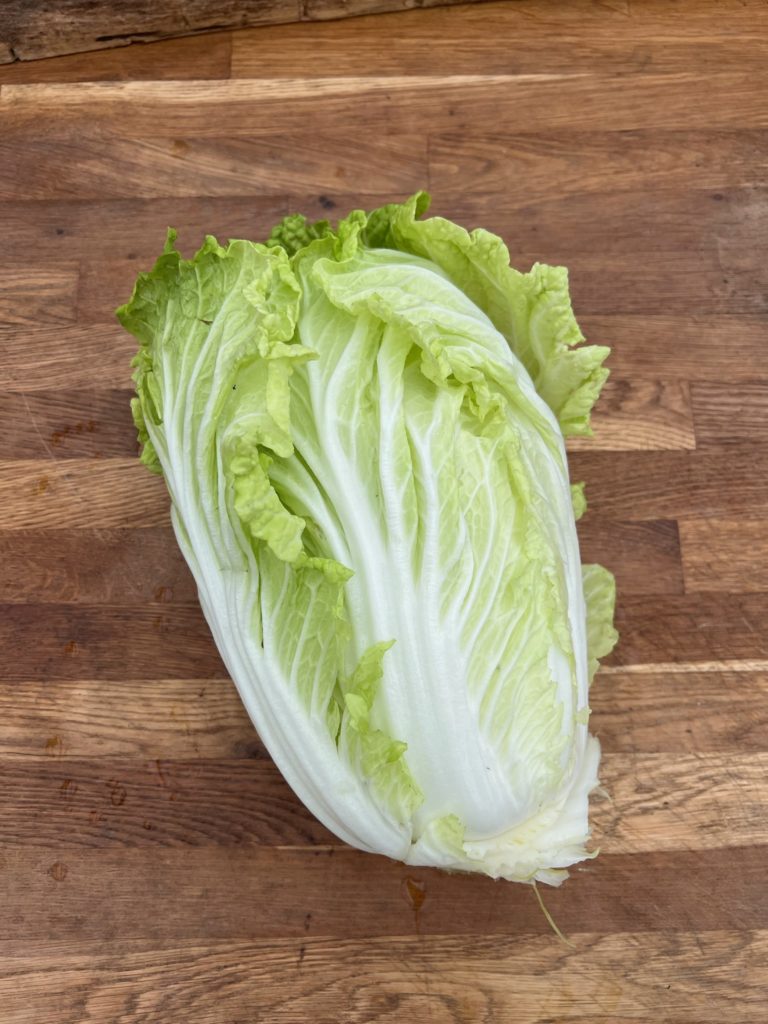
A Chinese cabbage. Crispy stems with leafy edges. More mild than other cabbage.
Rinse. Eat raw or cooked.
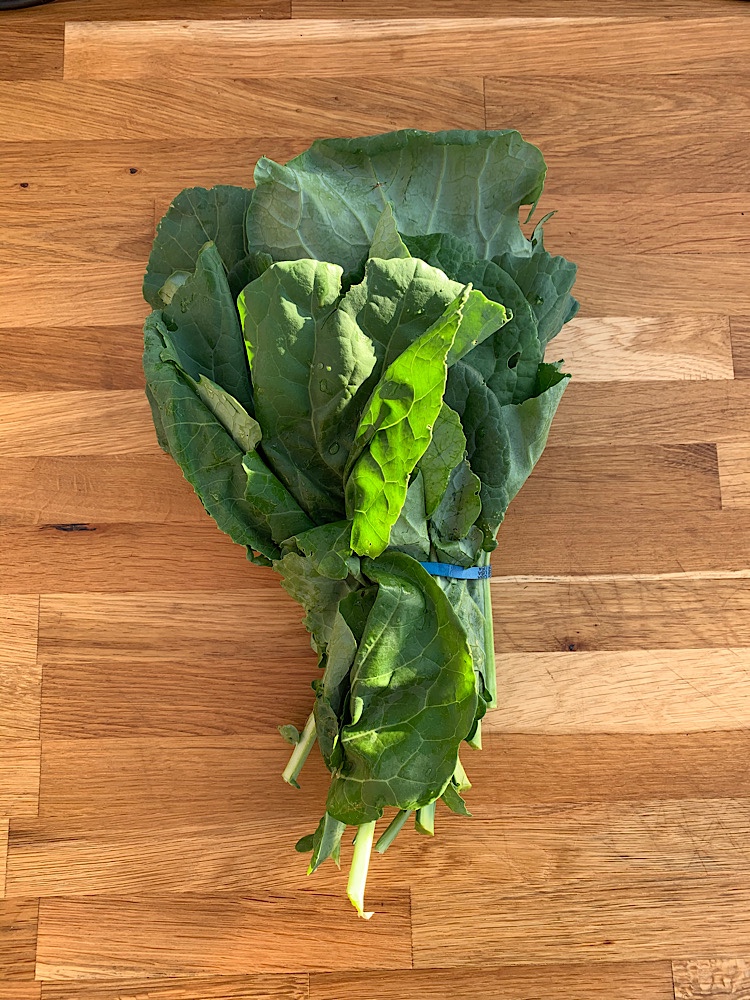
Collards are in the same family as cabbage, broccoli and cauliflower. A bitter green.
Rinse. Eat raw or cooked. Stems take longer to cook. I like to remove them and cook longer than leaves.
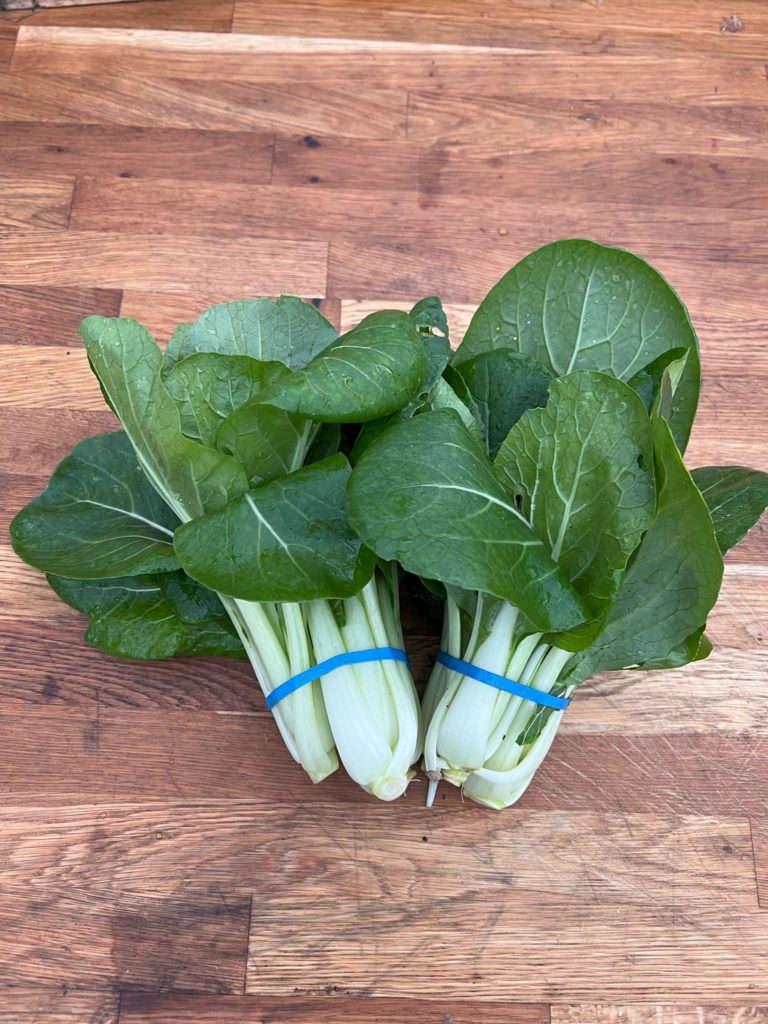
Pak choy, similar to bok choy or Chinese cabbage, is a leafy green vegetable widely used in Asian cuisines. It features dark green, crinkled leaves with white, crunchy stalks. Pak choy has a mild, slightly peppery flavor, and both the leaves and stems are edible. It is highly versatile, commonly stir-fried, sautéed, or used in soups and stews. Pak choy's tender, succulent texture and earthy taste make it a popular choice for adding a nutritious, leafy green component to a wide range of Asian and international dishes.
Rinse. Remove leaves from the base, chop or add whole leaves. Eat raw or cooked. If the leaves starts to wilt, you can revive it by soaking the leaves in ice water for a few minutes before patting them dry and using as desired.
It's best to use it within a few days for optimal flavor. To store it, place unwashed leaves in a plastic bag or a container lined with a dry paper towel to absorb excess moisture. Seal the bag or container loosely to allow for some airflow. Store the bag in the refrigerator's crisper drawer, where it will stay fresh for a few days.
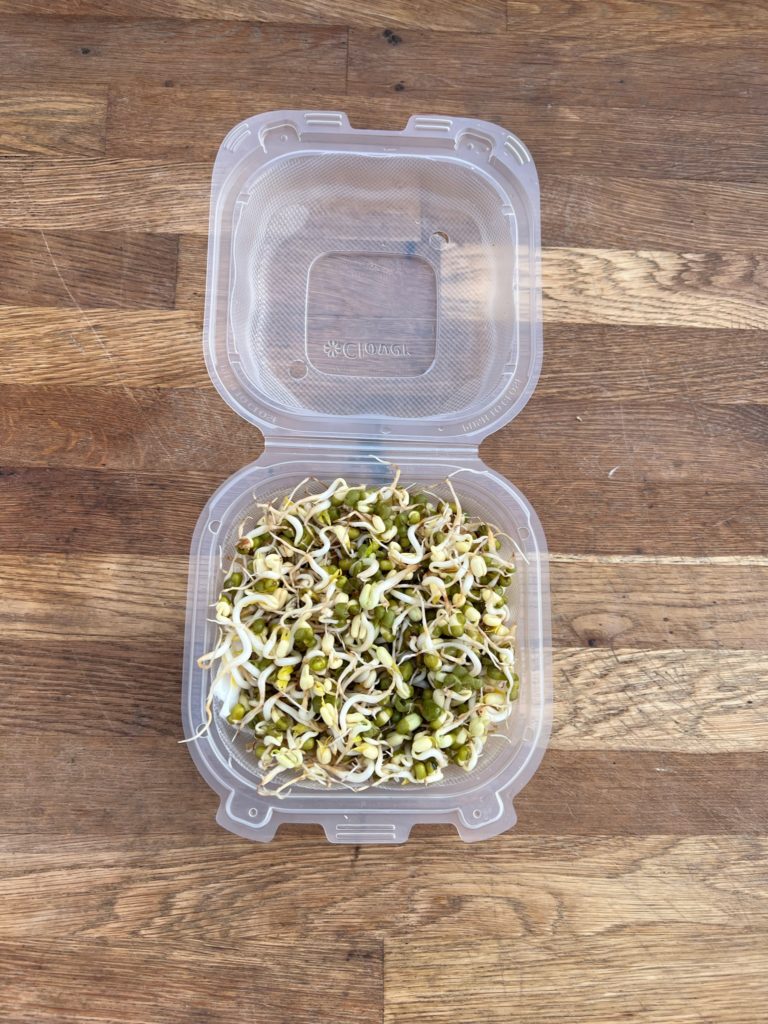
Mung bean sprouts are, crisp, and crunchy sprouts that emerge from germinated mung beans. These sprouts are commonly used in various cuisines, particularly in Asian dishes. Mung bean sprouts have a delicate and mild flavor, with a slight nuttiness.
Rinse. Eat raw or cooked.
To store it, place unwashed sprouts in a container lined with a dry paper towel to absorb excess moisture. Seal the bag or container loosely to allow for some airflow. Store the bag in the refrigerator's crisper drawer, where it will stay fresh for a few days.
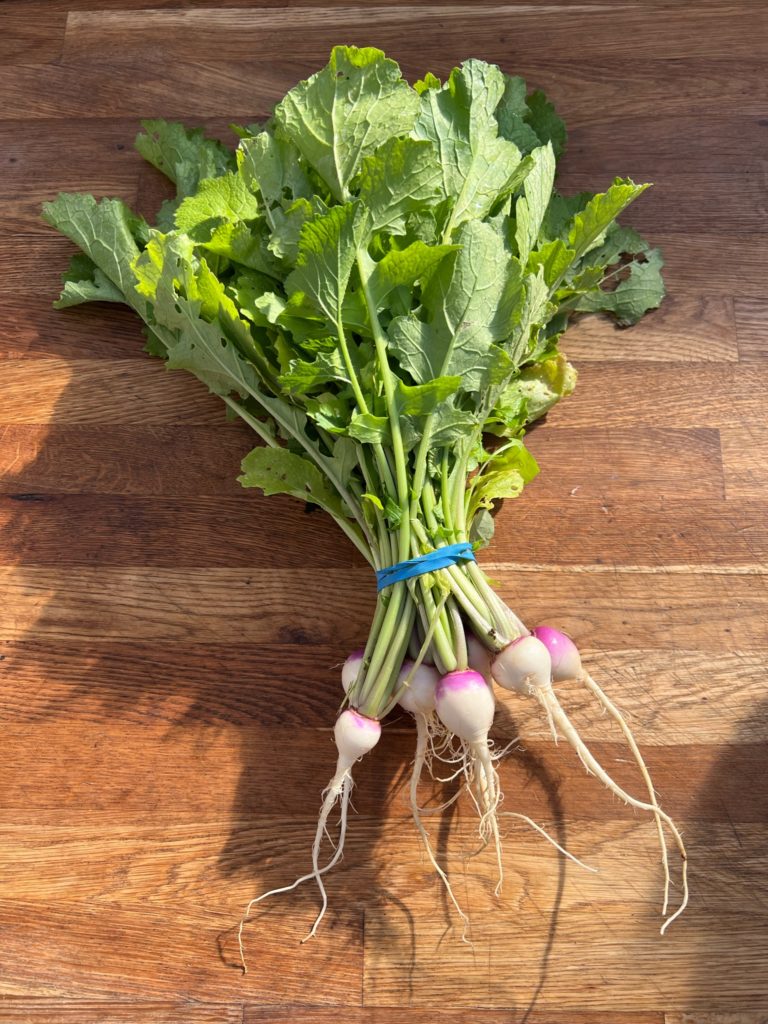
Baby turnips with greens have a delicate and mild flavor, with a slightly sweet and earthy taste. The turnip roots have a crisp and crunchy texture, while the greens are tender yet little prickly. They can be enjoyed raw in salads for a refreshing crunch or cooked in various dishes such as stir-fries, soups, or roasted alongside the greens.
Rinse. The whole turnip is edible, leaves and root. Eat raw or cooked. If the leaves start to wilt, you can revive them by soaking in ice water for a few minutes before patting them dry and using as desired.
Store the turnips and greens separately.
It's best to use leaves within a few days for optimal flavor. To store it, place unwashed leaves in a perforated plastic bag or a container lined with a dry paper towel to absorb excess moisture. Seal the bag or container loosely to allow for some airflow. Store the bag in the refrigerator's crisper drawer, where it will stay fresh for a few days.
Turnip roots can keep for months in the refrigerator.